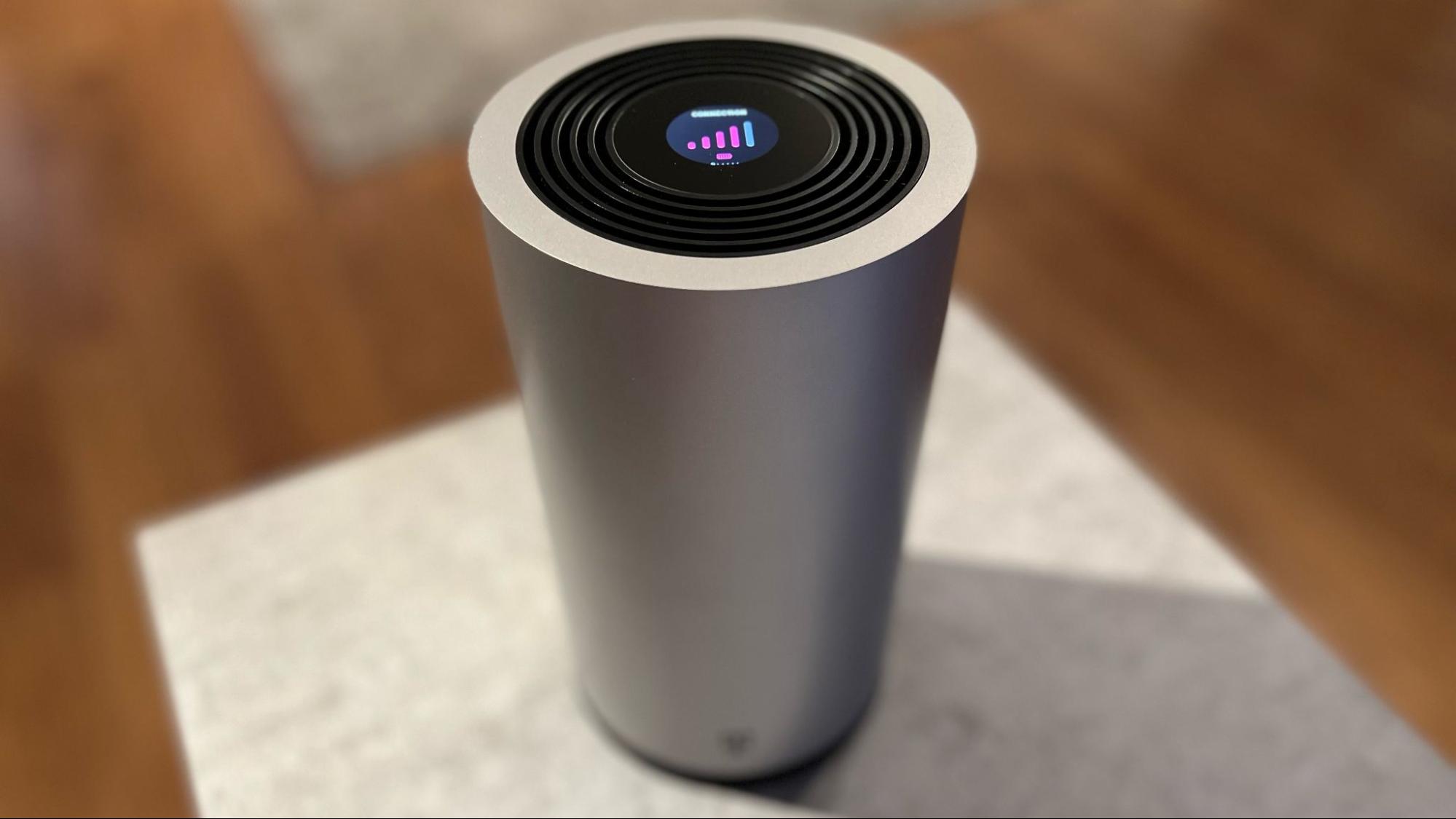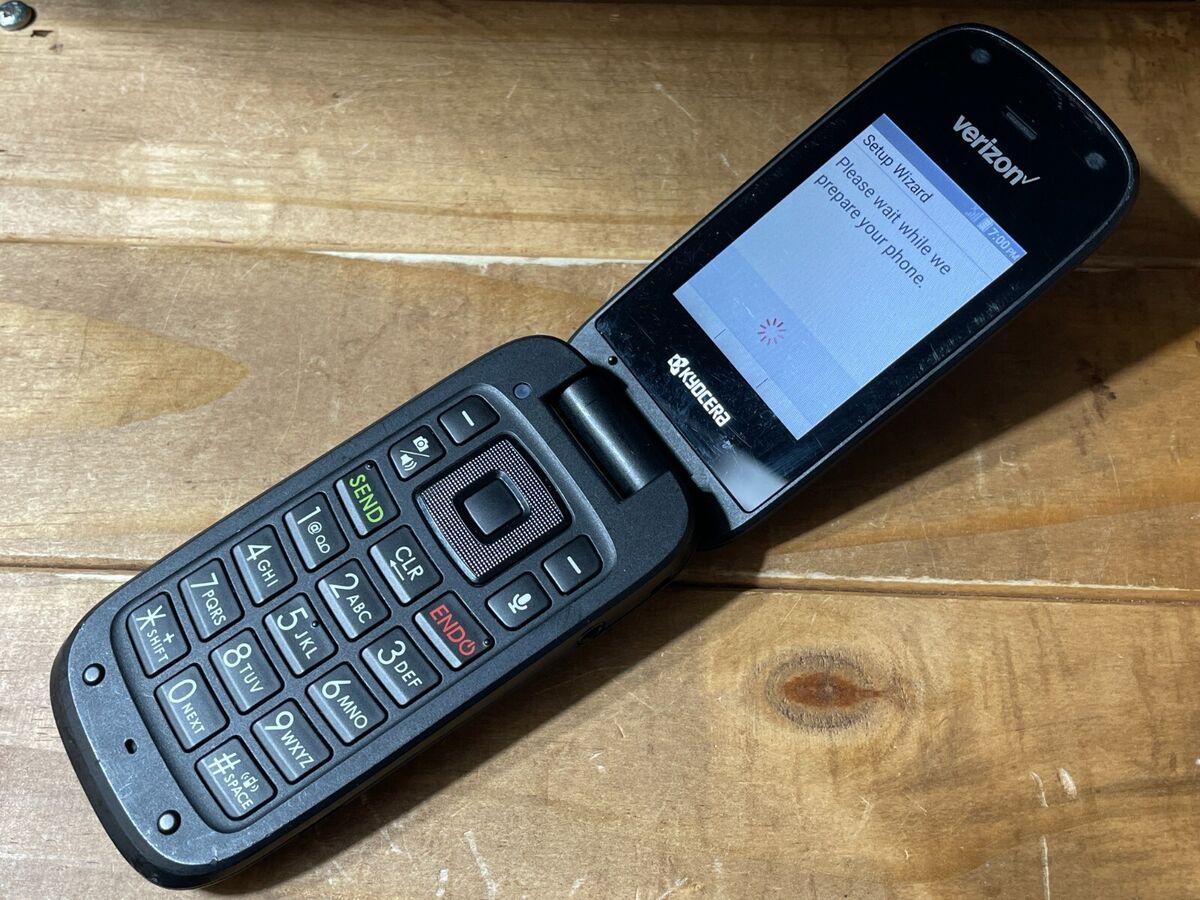Introduction
Welcome to this troubleshooting guide on Tmobile Wi-Fi issues. If you’ve been experiencing problems with your Tmobile Wi-Fi connection, you’re not alone. Wi-Fi issues can be frustrating, leading to slow internet speeds, dropped connections, or no connectivity at all. In this article, we’ll explore some possible reasons for Tmobile Wi-Fi problems and provide you with troubleshooting steps to help you resolve them.
A stable and reliable Wi-Fi connection is crucial in today’s connected world. Whether you’re streaming movies, playing online games, or simply browsing the internet, you rely on your Wi-Fi to stay connected and enjoy a seamless online experience. However, sometimes issues can arise, causing your Tmobile Wi-Fi to malfunction.
There can be several reasons why your Tmobile Wi-Fi is not working properly. It could be due to a problem with the router, network coverage issues, outdated firmware, or even incorrect settings on your Tmobile router. By understanding and addressing these common issues, you can quickly get your Tmobile Wi-Fi up and running again.
In the following sections, we’ll walk you through troubleshooting steps to diagnose and fix Tmobile Wi-Fi problems. It’s important to note that these steps are general solutions and may not apply to every specific situation. However, they should provide a starting point for troubleshooting and getting your Tmobile Wi-Fi back on track.
Possible Reasons for Tmobile Wi-Fi Issues
There can be several reasons why you may be experiencing Tmobile Wi-Fi issues. Understanding these possible causes can help you narrow down the troubleshooting process and find a solution more efficiently. Below are some common reasons for Tmobile Wi-Fi problems:
- Router Malfunction: One of the primary reasons for Tmobile Wi-Fi issues could be a malfunctioning router. The router may be experiencing hardware or software problems, preventing it from properly transmitting a Wi-Fi signal.
- Network Interference: Wi-Fi signals can be disrupted by various devices and objects in the vicinity. Microwave ovens, cordless phones, and other electronic devices operating on similar frequencies can interfere with the Wi-Fi signal, causing connectivity issues.
- Distance from the Router: The distance between your device and the Tmobile router can affect the strength of the Wi-Fi signal. If you’re too far away, the signal may be weak, leading to slow connection speeds or dropped connections.
- Network Overload: If there are too many devices connected to the Tmobile Wi-Fi network simultaneously, it can put a strain on the router and result in slower internet speeds for all devices.
- Outdated Firmware: Like any other electronic device, routers require firmware updates to fix bugs and enhance performance. Outdated firmware can cause compatibility issues and lead to Tmobile Wi-Fi problems.
- Incorrect Router Settings: Incorrect configuration settings on the Tmobile router can also cause Wi-Fi issues. This could include incorrect network security settings, channel interference, or conflicting IP addresses.
Identifying the root cause of your Tmobile Wi-Fi problems can help you determine the appropriate steps to resolve them. In the next section, we’ll outline some troubleshooting steps you can follow to fix Tmobile Wi-Fi issues.
Troubleshooting Steps to Fix Tmobile Wi-Fi Problems
If you’re experiencing Tmobile Wi-Fi issues, there are several troubleshooting steps you can try to resolve the problem. These steps are designed to address common issues and get your Tmobile Wi-Fi up and running again. Follow the steps below to troubleshoot Tmobile Wi-Fi problems:
- Restart Your Router: Begin by restarting your Tmobile router. Power off the router, wait for about 30 seconds, and then power it back on. This simple step can often resolve minor technical glitches and restore your Wi-Fi connection.
- Check Your Device: Ensure that the issue is not with your device. Try connecting other devices to the Tmobile Wi-Fi network to rule out any device-specific problems. If other devices can connect without issues, the problem may lie with your initial device.
- Reset Network Settings: Resetting the network settings on your device can help resolve connectivity issues. Go to your device’s settings and look for the option to reset network settings. Note that this step will remove saved Wi-Fi networks, so be prepared to reconnect to them afterward.
- Move Closer to the Router: If you’re experiencing weak or intermittent signals, try moving closer to the Tmobile router. The proximity can improve the signal strength and enhance the stability of your Wi-Fi connection.
- Clear Wi-Fi Cache: Over time, cached data related to Wi-Fi networks can accumulate and cause connectivity issues. Clearing the Wi-Fi cache on your device can help resolve this problem. Look for the option to “Forget” or “Remove” the Tmobile Wi-Fi network from your device’s Wi-Fi settings.
- Check for Firmware Updates: Access the router’s settings page and check for any available firmware updates. If an update is available, follow the instructions to install it. Keeping your router’s firmware up to date can often resolve compatibility issues and improve overall performance.
- Change Wi-Fi Channel: If you’re experiencing interference from neighboring networks, changing the Wi-Fi channel on your Tmobile router can help. Access the router’s settings page and look for the Wi-Fi channel configuration. Experiment with different channels to find the one with the least interference.
- Reset Router to Factory Defaults: If all else fails, you can try resetting your Tmobile router to its factory default settings. This step will erase any customized configurations, so be sure to note them down beforehand. Press and hold the reset button on the router for about 10 seconds or follow the specific instructions for your router model.
Remember to test your Tmobile Wi-Fi connection after each troubleshooting step to determine if the issue has been resolved. If you continue to experience problems, there may be an underlying issue with your Tmobile service or equipment. In the next section, we’ll discuss some additional steps you can take to address these issues.
Resetting Your Tmobile Router
If you’re still experiencing Tmobile Wi-Fi issues after attempting the previous troubleshooting steps, resetting your Tmobile router may help resolve the problem. Resetting the router can clear any configuration errors or glitches that may be causing the Wi-Fi connection problems.
Before proceeding with the router reset, keep in mind that this will restore the router to its default factory settings. Any customized configurations, including Wi-Fi network names (SSID), passwords, and port forwarding settings, will be lost. Make sure to have a list of these settings handy, as you will need to reconfigure the router after the reset.
To reset your Tmobile router, follow these steps:
- Locate the reset button on the back or bottom of your Tmobile router. It is usually a small, recessed button that may require a paperclip or pin to press.
- With the router powered on, press and hold the reset button for about 10-15 seconds. Release the button when the router’s lights start to flash or when the device restarts.
- Wait for a few minutes as the router goes through the reset process. The lights on the router will typically blink or change to indicate the reset is complete.
- Once the router has finished resetting, you will need to reconfigure it with your desired settings. This includes setting up your Wi-Fi network name (SSID) and password, as well as configuring any other necessary settings.
After resetting and reconfiguring your Tmobile router, test your Wi-Fi connection to see if the issue has been resolved. Connecting your devices to the newly configured Wi-Fi network can help ensure a stable and reliable connection.
If resetting the router doesn’t resolve the Wi-Fi issues or if you’re unsure about reconfiguring the router, consider reaching out to Tmobile support for further assistance. They can guide you through the process or provide additional troubleshooting steps specific to your router model.
In the next section, we’ll discuss how to reconnect to your Tmobile Wi-Fi network after performing a router reset.
Reconnecting to Tmobile Wi-Fi Network
After resetting your Tmobile router, you will need to reconnect your devices to the Wi-Fi network. Reconnecting is necessary because the router’s factory reset will revert the network name (SSID) and password back to their default settings.
To reconnect to your Tmobile Wi-Fi network, follow these steps:
- On your device, navigate to the Wi-Fi settings. This can usually be found in the settings menu.
- Look for the list of available Wi-Fi networks and locate your Tmobile network (the SSID you previously set up or the default network name).
- Select the Tmobile Wi-Fi network to connect to it. You may be prompted to enter the Wi-Fi password.
- Enter the Wi-Fi password. If you have not changed it from the default settings, refer to the documentation that came with your router or contact Tmobile support for assistance.
- After entering the password, click or tap on the “Connect” or “Join” button to establish the connection.
- Wait a moment as your device connects to the Tmobile Wi-Fi network. Once connected, you should see the Wi-Fi icon on your device’s screen indicating a successful connection.
Once you have successfully reconnected to the Tmobile Wi-Fi network, test your internet connection by accessing websites or using online applications. If the Wi-Fi issues persist, consider checking other factors such as the network coverage or updating the firmware on your Tmobile router.
In the next section, we’ll discuss how to check the Tmobile network coverage and what steps you can take to ensure a strong and reliable Wi-Fi connection.
Checking Tmobile Network Coverage
When experiencing Tmobile Wi-Fi issues, it’s essential to ensure that you have adequate network coverage in your area. Tmobile coverage can vary depending on your location, and weak or spotty coverage can impact your Wi-Fi connection. Checking the Tmobile network coverage can help you determine if the issue lies with the network itself.
To check Tmobile network coverage, follow these steps:
- Visit the Tmobile website or use the Tmobile mobile app.
- Look for the coverage map or network coverage section.
- Enter your location details, such as your address or ZIP code.
- Review the map or details provided to see the Tmobile network coverage in your area.
- Check for any reported outages or service disruptions in your location.
If the coverage map indicates that you are in an area with strong Tmobile network coverage, the issue may not be related to network coverage. However, if the map shows weak or no coverage, it is advisable to contact Tmobile support to report the issue and seek further assistance.
Furthermore, even if the network coverage appears to be strong, there may be factors within your environment that can hinder Wi-Fi signals. Interference from other electronic devices or physical obstructions like walls or large objects can weaken the Wi-Fi signal. Positioning your Tmobile router in a central location in your home and away from potential sources of interference can help improve the Wi-Fi signal strength.
Testing the Wi-Fi connection near the router can also provide insights into the strength of the Tmobile Wi-Fi signal. If the signal is consistently weak even in close proximity to the router, you may need to consider other troubleshooting options such as updating the router firmware or adjusting the router settings.
In the next section, we’ll discuss how updating the firmware on your Tmobile router can potentially resolve Wi-Fi issues.
Updating Tmobile Router Firmware
Outdated firmware on your Tmobile router can sometimes be the cause of Wi-Fi issues. Firmware updates are released by Tmobile to address bugs, improve performance, and enhance security. Updating your Tmobile router’s firmware can help resolve compatibility issues and ensure the smooth operation of your Wi-Fi connection.
To update the firmware on your Tmobile router, follow these steps:
- Access the router’s administrative settings by entering the router’s IP address in a web browser. The default IP address is typically printed on the router or provided in the user manual. If you’re unsure, you can usually find it by checking your device’s Wi-Fi settings and looking for the default gateway.
- Enter the router’s username and password to log in. If you haven’t changed the default login credentials, refer to the documentation that came with your router or contact Tmobile support for assistance.
- Navigate to the firmware update section of the router’s settings. This location may vary depending on the router model, but it is usually found under a “System” or “Administration” tab.
- Check for any available firmware updates. If an update is available, follow the instructions provided by Tmobile to download and install the latest firmware version.
- Wait for the firmware update process to complete. It’s important not to interrupt or power off the router during the update process, as it can cause errors or even damage the router.
- After the firmware update is complete, restart your Tmobile router and allow it to fully boot up.
Once your Tmobile router has been updated with the latest firmware, test your Wi-Fi connection to see if the issue has been resolved. If you continue to experience Wi-Fi problems, you may need to consider other troubleshooting steps or contact Tmobile support for further assistance.
In the next section, we’ll discuss the importance of checking and verifying your Tmobile router settings to ensure they are correctly configured for optimal Wi-Fi performance.
Checking Tmobile Router Settings
Incorrect configuration settings on your Tmobile router can lead to Wi-Fi issues. It’s essential to check and verify that your router settings are correctly configured to ensure optimal Wi-Fi performance. By reviewing and adjusting these settings, you can potentially resolve any connectivity problems you may be experiencing.
To check your Tmobile router settings, follow these steps:
- Access the router’s administrative settings by entering the router’s IP address in a web browser. The default IP address is usually printed on the router or provided in the user manual. If you’re unsure, you can typically find it by checking your device’s Wi-Fi settings and looking for the default gateway.
- Enter the router’s username and password to log in. If you haven’t changed the default login credentials, refer to the documentation that came with your router or contact Tmobile support for assistance.
- Once logged in, navigate through the router’s settings to review the key Wi-Fi configuration options. These may include the network name (SSID), password, security settings, channel selection, and other advanced options.
- Check that the network name (SSID) and password are correctly configured. Ensure that the password is strong and not easily guessable.
- Review the security settings to ensure that the appropriate encryption method is being used. WPA2 is the recommended and most secure option for Tmobile Wi-Fi networks.
- Check the selected Wi-Fi channel. If you suspect interference or overlapping with neighboring networks, changing the Wi-Fi channel to a less congested one can improve performance.
- Verify that other advanced options, such as QoS (Quality of Service) settings or parental controls, are configured appropriately for your needs.
After reviewing and adjusting the router settings, save any changes made and restart your Tmobile router. Allow sufficient time for the router to complete the reboot process before testing your Wi-Fi connection again.
If you are unsure about any specific router settings or are experiencing difficulties, consider consulting the user manual or reaching out to Tmobile support for further assistance. They can provide guidance on router settings specific to your model and can help troubleshoot any issues you may encounter.
In the next section, we’ll discuss the importance of contacting Tmobile support for assistance if you are unable to resolve your Tmobile Wi-Fi issues on your own.
Contacting Tmobile Support for Assistance
If you have followed the troubleshooting steps outlined above and are still experiencing Tmobile Wi-Fi issues, it may be necessary to seek assistance from Tmobile support. Their dedicated customer service team can provide expert guidance and troubleshooting tailored to your specific situation.
Here are the steps to contact Tmobile support:
- Visit the Tmobile website and look for the “Support” or “Contact Us” section. Alternatively, you can find the Tmobile support contact information on your bill or in the documentation that came with your service.
- Choose the contact method that best suits your needs. This may include options such as live chat, phone support, or submitting an online support request.
- Provide detailed information about your Tmobile Wi-Fi issues, including any troubleshooting steps you have already attempted. This will help the support team better understand your situation and provide more effective assistance.
- Follow any additional instructions provided by the Tmobile support representative. They may ask for additional details or perform further diagnostics to help diagnose and resolve the issue.
- Listen carefully to the support representative’s advice and suggestions. They may provide specific troubleshooting steps or recommend further actions, such as scheduling a technician visit, if necessary.
- Keep a record of the support ticket number or any reference number provided during your interaction. This can be helpful for future reference or follow-up communication.
Remember to remain patient and polite while seeking assistance from Tmobile support. They are dedicated to helping you resolve your Wi-Fi issues and ensuring that you have a satisfactory experience with their services.
In some cases, they may identify an underlying issue with your equipment or network connection that requires professional intervention. Tmobile support can guide you through the necessary steps to resolve the issue or arrange for a technician to address the problem directly.
In the final section, we’ll briefly recap the troubleshooting steps discussed in this article and emphasize the importance of maintaining a reliable Tmobile Wi-Fi connection.
Conclusion
Having a stable and reliable Tmobile Wi-Fi connection is crucial in today’s connected world. When you encounter Wi-Fi issues, it can be frustrating and disrupt your online experience. Thankfully, by following the troubleshooting steps outlined in this guide, you can diagnose and resolve many common Tmobile Wi-Fi problems.
We started by exploring possible reasons for Tmobile Wi-Fi issues, including router malfunctions, network interference, distance from the router, network overload, outdated firmware, and incorrect router settings. Understanding these potential causes allows you to pinpoint the specific issue and take appropriate action.
We then provided a range of troubleshooting steps to help you fix Tmobile Wi-Fi problems. These steps include restarting your router, checking your device, resetting network settings, moving closer to the router, clearing Wi-Fi cache, updating the router firmware, changing Wi-Fi channels, and even resetting the router to factory default settings.
In addition, we emphasized the importance of rejoining the Tmobile Wi-Fi network after performing a router reset, checking Tmobile network coverage, updating the router firmware, and verifying and adjusting router settings such as the network name (SSID), password, security settings, and channel selection.
If you have exhausted these troubleshooting steps and are still unable to resolve the Wi-Fi issues, we recommend reaching out to Tmobile support for further assistance. Their expertise and guidance can help you address any underlying issues or provide additional troubleshooting tailored to your situation.
Remember, a reliable Tmobile Wi-Fi connection is essential for uninterrupted online activities. By staying proactive and taking the necessary steps to maintain a strong signal and troubleshoot any issues, you can enjoy smooth browsing, streaming, gaming, and all the benefits of a seamless online experience.

























